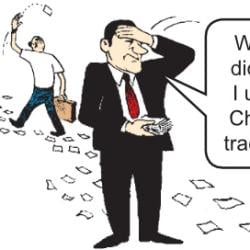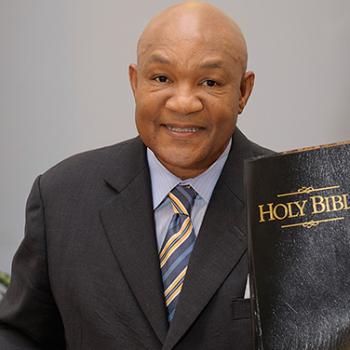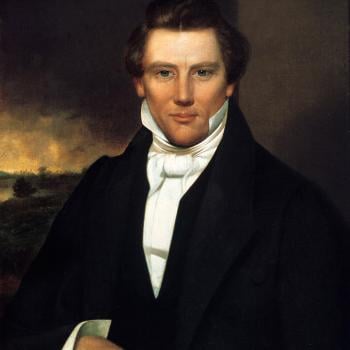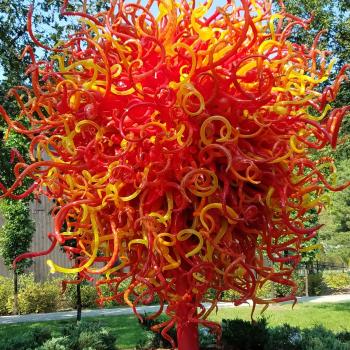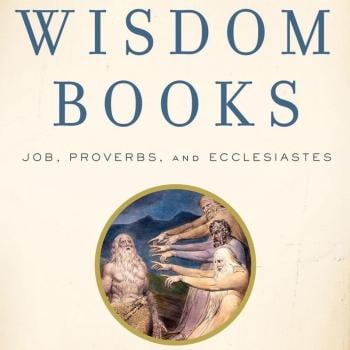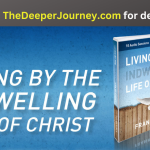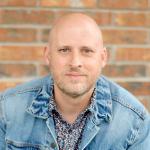 When is a dream a reality and a reality a dream? When does a movie plant an idea in your head that you just can’t get out. Well, it would have to be a very special movie, and Inception is such a movie. We reviewed the movie when it came out, with its discussions of the possibility of extraction (taking an idea out of the mind through dreams) or inception (planting ideas in the mind through dreams) but this time we need to focus on another feature of the film that is too little discussed— the totems, which in the case of Cobb and his wife, is a small metal top. This was the talisman that kept them sane and let them know when they were dreaming and when what they were seeing was real. Perhaps an hour into the film Cobb (aka Di Caprio) says that in her dream his wife would see the little top spin endlessly, which was the way she knew it was a dream. In a world with gravity, eventually the top will topple.
When is a dream a reality and a reality a dream? When does a movie plant an idea in your head that you just can’t get out. Well, it would have to be a very special movie, and Inception is such a movie. We reviewed the movie when it came out, with its discussions of the possibility of extraction (taking an idea out of the mind through dreams) or inception (planting ideas in the mind through dreams) but this time we need to focus on another feature of the film that is too little discussed— the totems, which in the case of Cobb and his wife, is a small metal top. This was the talisman that kept them sane and let them know when they were dreaming and when what they were seeing was real. Perhaps an hour into the film Cobb (aka Di Caprio) says that in her dream his wife would see the little top spin endlessly, which was the way she knew it was a dream. In a world with gravity, eventually the top will topple.
This bring us to the final scene in the movie— is it real or is it a dream? Only the top can tell, and the final scene shows the top first spinning, then wobbling and beginning to fall, then fade to black. We are left with the impression that the homecoming is real, though there is just that slight possibility that the top might go on spinning, for we do not actually see it come to rest. And this brings us to the leap of faith.
Early in the movie when Cobb is talking to Ariadne (played by the able Ms. Page) he tells her, who is an architect of dream implants, that she should only build the framework (or the maze) and she must allow the mind and its subconscious to fill in all the details with the information it already has stored, for instance all the people. In other words, the idea of planting an idea in someone’s brain that will grow and flourish involves a leap of faith, because the brain must believe it is its own idea, originating in that sleeping brain itself.
What we have then in this film is not merely a parable about the shadowy distinctions between dreams and reality, but the equally shadowy border between science and faith. Even the scientist must take leaps of faith to discover things, to learn things, to accomplish things. For example, it is without question a faith assumption that the human senses and the mind are reliable, through which we perceive everything and without which objective reality is not accessible to us. How do we know our eyes, ears, mind is reliable? Frankly, we don’t and at this point we could run down the road of ‘cogito ergo sum’ but we will not.
My point is, that even science is based on a modicum of faith assumptions and leaps of faith. Indeed, even modern science in the end is based not only on some unprovable faith hypotheses about there actually being an objective reality, and that our senses can accurately help us perceive it, at least usually, but science in the end requires certain theological hypotheses as well— for example that nature is not defiled by scientific inquiry, because of course nature is not God and can be distinguished from the creator of the universe, or at least the concept of such a creator. At the bottom of the scientific subconscious is the creator/ creation distinction, with the added assumption that we ought to and perhaps were meant to explore the latter, even in purely empirical ways. These are the thoughts that Dawkins and Hawking and others do not wish to entertain. But if like Cobb they go down in the third level of subconscious, they will discover that the veil between science and faith is in fact diaphanous. Though reality may have its totems, it’s touchstones that allow us to test and see if something is real, at the end of the day, all of us must make our leaps of faith, small or great. Indeed, most of the decisions we make everyday involve a faith postulate. I trust that my car will start when I race into the garage to run off to school, I trust (but have not empirically verified) that my chair in my office will hold me when I sit in it, I trust that the food in the seminary cafeteria will not harm me, and so on and so on. Everyday, for everyone, leaps of faith are being made right, left and center even by the most skeptical of atheists and agnostics.
Cobb in the end just wanted to come home, wanted to see the faces of his two beautiful children. Exiled like Cain for an apparent murder (which in Cobb’s case was not deliberate, as he planted an idea in his wife’s brain that led to mayhem and madness) “when he returned to his right mind” and exorcised his demons and dealt with his guilt, he was allowed to go home, ‘back to the real world’.
I suspect this movie will continue to be analyzed and psychoanalyzed for many years to come as a classic. It is a testimony not merely to the human imagination, but to human reality, and it teaches us the wisdom of how to tell, and why we need to tell the difference between our dreams, and our reality. While it is true that without vision, a people perish, it is also true that unless dreams, like that of MLK, become realities, they are just fantasies, figments of the mind, and they do not change the world. It reminds me of a song from the 70s that was a movie theme song from the Thomas Crown Affair, award winning lyrics by Legrand and Bergman—
Round, Like a circle in a spiral Like a wheel within a wheel, Never ending on beginning, On an ever-spinning reel Like a snowball down a mountain, Or a carnival balloon Like a carousel that's turning Running rings around the moon Like a clock whose hands are sweeping Past the minutes on its face And the world is like an apple Spinning silently in space Like the circles that you find In the windmills of your mind! Like a tunnel that you follow To a tunnel of its own Down a hollow to a cavern Where the sun has never shone Like a door that keeps revolving In a half-forgotten dream Like the ripples from a pebble Someone tosses in a stream. Like a clock whose hands are sweeping Past the minutes on its face And the world is like an apple Spinning silently in space Like the circles that you find In the windmills of your mind! Keys that jingle in your pocket Words that jangle in your head Why did summer go so quickly? Was it something that I said? Lovers walk along a shore And leave their footprints in the sand Was the sound of distant drumming Just the fingers of your hand? Pictures hanging in a hallway or the fragment of a song, half-remembered names and faces but to whom do they belong? When you knew that it was over Were you suddenly aware That the autumn leaves were turning To the color of her hair? Like a circle in a spiral Like a wheel within a wheel Never ending or beginning On an ever-spinning reel As the images unwind Like the circles that you find In the windmills of your mind! And oh yes. That picture at the top of this post----its a blend of the painting of a street artist, and an actual streetscene-- half imagination, half 'concrete' reality.



